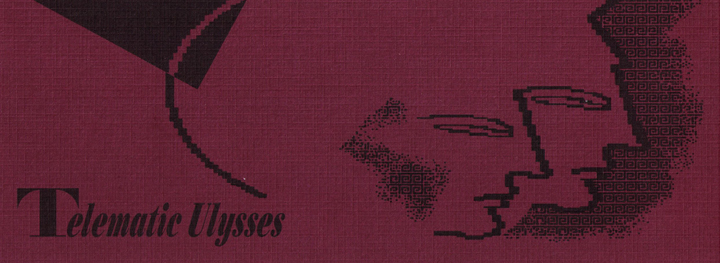Art & Art History
Telematic Ulysses: The New Office Landscape

Gallery 400
400 South Peoria Street, Chicago, IL 60607
Telematic Ulysses: The New Office Landscape is an international design research project by Maurizio Morgantini, designer and professor at the University of Illinois at Chicago, and Claudia Dona, journalist and design historian. Made possible by the support of EIMU (Esposizione Internazionale Mobile Ufficio), Milan, Italy, and COSMIT (Comitato Organizzatore Salo del Mobile Italiano), Milan, Italy, Telematic Ulysses was an exhibition by a group of advanced design students of the University of Illinois at Chicago School of Art and Design. The research, which involved the participation of universities in the United States, Italy and Japan, investigated the relationship between man and advanced technologies, and the new qualities of telecommunication and information technologies in tomorrow’s new office environment.
In their essay on the exhibition, “Technology and Myth,” Morgantini and Dona explain, “After a rather stable historical development which has always seen the artificial presented as an imitation or as something in opposition to the natural, we are now entering a new era in which the highly artificial overlaps the natural, no longer imitating its results but rather its processes. A very long cycle seems to have come to an end; the recent objects of technology look like the fruits of a return journey to the staring point: our intelligence.”
“…We are beings now endowed with exceptional qualities like speed, omniscience, and ubiquity; we are Telematic Nomads that more and more have come to look like the gods of the ancient mythology, but we are still unable fully to appreciate our new condition. Like the ancients, we need a dream, a Myth in the form of a tale that explains a complexity which otherwise escapes us. The fact that we can fly today we owe to the dream of Icarus. And when a dream becomes collective, and thus a Myth, it has the power to direct the growth of technology through historical time.”
The exhibition accompanied a panel discussion, sponsored by MODO design magazine, on the “New Office Landscape” at the Museum of Contemporary Art.
Video production by Edward Bonfield, Pamela Giese and Richard Wolksi
Additional collaboration:
Morad Ghassemian
Ruby Harris
Timothy Koeppen
Martin O’Connor
Raul Paredes
Peter Rydig
Music by Xavier Callobre